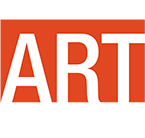Ron Stonier: A Concept of Time
Opening Reception: Tuesday, January 15, 7–9 p.m.
Curatorial Tour: Thursday, January 31, 1:30 p.m. and Saturday, March 2, 2 p.m.
Throughout his career, Ron Stonier (1933-2001) was primarily concerned with abstraction and established a practice dedicated to an unceasing investigation of painting. Stonier developed and moved through separate and, at times, discrete themes to create a unique visual language that combined colour and technique, abstract expressionism with elements of pop, and hard-edged painting. In the early 1960s, he used patches of paint and forms coalesced and contained within broader fields and frames. By the end of that decade, his work became more precise, using horizontal bands in the Couple series and round concentric rings in the Target series from the 1970s. Later, in large-scale works, he began to move away from hard-edged forms, returning to a more painterly approach he had explored previously. While his work was driven by constant experimentation, Stonier was acutely aware of his artistic predecessors and teachers, including Gordon Smith and Jack Shadbolt. In 1977, he observed: "To live in the present is to include the future with the past. To live in the future is to lose the present and end up in the past."
Stonier was born in Victoria, BC. He studied at the Provincial Normal School in Victoria, the University of British Columbia and the University of Washington, Seattle. In 1957, he completed his education at the Vancouver School of Art (now Emily Carr University of Art + Design), where he later taught painting from 1962 to 1978. While teaching, Stonier gained a reputation as a kind and dedicated teacher, who held his students to the same exacting standards to which he held himself. From 1978 until his death in 2001, Stonier continued his practice, painting and drawing daily.
The West Vancouver Art Museum would like to thank Sheila Cano for loaning the work featured in this exhibition and her support in producing the publication that accompanies this exhibition.


